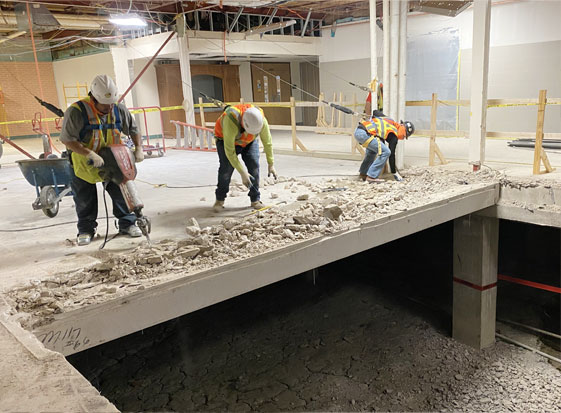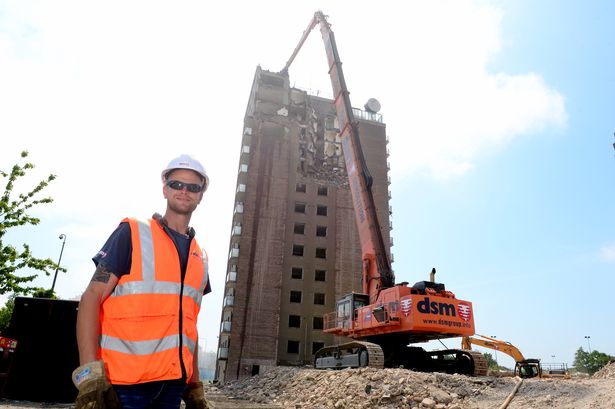
You should look into recycled concrete aggregate (RCA) if you are looking to save money and decrease your environmental impact. This green material, also called crushed concrete, is an environmentally-friendly option for driveways, walkways, and roads. It is also great for landscaping projects such as raised garden beds or erosion control retaining wall. RCA is not like new concrete and won't pollute the environment.
RCA may not be the best option for your project, despite all its obvious advantages. Consult with a professional to ensure you get the materials you require. They will be able to tell you what material to order and how much. There are many companies that can assist you in this difficult area of Dallas-Fort Worth.

Big City Crushed Concrete, is one example. In fact, this Texas-based company is one of the largest concrete rubble processors in the nation. This Dallas-based company processes approximately two million tons of concrete annually. The company offers services to local municipalities, contractors landscapers, homeowners and others with three locations in DFW.
The company specializes is recycling concrete rubble into TXDOT quality rock materials. By using crushed concrete, you can eliminate your need for costly landfilled disposal of concrete. RCA can be used for a number of projects such as drainage projects, erosion control retaining wall, and other projects. Using RCA in your next job will save natural resources. It can also reduce the number of truck miles that your vehicle generates.
It is possible to save time and money by installing a RCA. Crushed concrete can be purchased at a fraction the cost of new concrete. This means that you can save time and money. There are even LEED points to be had for using recycled concrete in your construction project.
The idea of breaking up a big cement pot and making it into a RCA is not new. However, the new fad in the industry is using recycled concrete to create new concrete for a more sustainable and eco-friendly building process. This concrete has a slightly different aesthetic than traditional concrete, but the same strength and durability. It is great for many projects including roads, highways and parking lots, as it takes up less space.

While it may not be the right time to recommend a RCA for a project, the truth is that it can save you money, help us preserve our natural resources and help the environment. This eco-friendly option is becoming more popular as companies realize its benefits. Big City Crushed Concrete provides mobile crushing on site for clients. This allows them to provide a more cost-effective service for their clients.
FAQ
How long does it take to complete a home renovation?
It all depends on how big the project is and how much time you spend each day. On average, homeowners spend between three and six hours per week working on their project.
How do I choose the right contractor?
Ask family and friends to recommend contractors. Check out online reviews. Make sure that the contractor you choose has experience in the area of construction that you are interested in. Check out references and ask for them to provide you with some.
How many times should I change my furnace's filter?
How often your family expects to use the heating system in their home will determine the answer. It is worth changing your filter more often if you intend to spend a lot of time outside during winter months. However, if you rarely go out of the house, you may be able to wait longer between changes.
The average furnace filter will last approximately three months. Your furnace filter should be replaced every three months.
You can also check the manufacturer's recommendations for when to change your filter. Manufacturers recommend changing your filter after each heating season. Other manufacturers suggest waiting until visible dirt builds up.
Statistics
- According to the National Association of the Remodeling Industry's 2019 remodeling impact report , realtors estimate that homeowners can recover 59% of the cost of a complete kitchen renovation if they sell their home. (bhg.com)
- ‘The potential added value of a loft conversion, which could create an extra bedroom and ensuite, could be as much as 20 per cent and 15 per cent for a garage conversion.' (realhomes.com)
- They'll usually lend up to 90% of your home's "as-completed" value, but no more than $424,100 in most locales or $636,150 in high-cost areas. (kiplinger.com)
- Most lenders will lend you up to 75% or 80% of the appraised value of your home, but some will go higher. (kiplinger.com)
- Design-builders may ask for a down payment of up to 25% or 33% of the job cost, says the NARI. (kiplinger.com)
External Links
How To
How can I plan a complete house remodel?
Research and careful planning are essential when planning a house remodel. Before you start your project, there are many factors to consider. You must first decide what type home improvement you want. You could choose from different categories such as kitchen, bathroom, bedroom, living room, etc. After you decide which category you want to work on, figure out how much you can afford to spend on the project. If you have never worked on homes, it is best to budget at most $5,000 per room. You might be able get away with less if you have previous experience.
Once you know how much money your budget allows you to spend, then you will need to decide how big a job it is you are willing to take on. For example, if you only have enough money for a small kitchen remodel, you won't be able to add a new flooring surface, install a new countertop, or even paint the walls. If you have the money to do a complete kitchen remodel, you will be able to handle almost anything.
Next, look for a contractor with experience in the type or project you are looking to tackle. You'll get high-quality results and save yourself lots of headaches down the line. Once you have hired a contractor, gather materials and other supplies. It depends on how large your project is, you might need to buy everything made from scratch. You shouldn't have any trouble finding the right item in pre-made stores.
After you've gathered all the supplies you need, it's time to begin making plans. Begin by sketching out a rough plan of where furniture and appliances will be placed. Then, you'll move onto designing the layout of the rooms. Remember to leave enough space for outlets and plumbing. You should also place the most frequently used areas closest to the front door, so visitors have easy access. The final step in your design is to choose colors and finishes. Keep your designs simple and in neutral tones to save money.
Once you have completed your plan, it is time to begin building. Before you start building, check your local codes. While permits are required in some cities, homeowners can build without one in others. To begin construction you will first need to take down all walls and floors. Next, you'll lay down plywood sheets to protect your new flooring surfaces. You will then attach or nail pieces of wood together to make the cabinet frame. Lastly, you'll attach doors and windows to the frame.
After you're done, there are still a few things you need to do. For example, you'll probably want to cover exposed pipes and wires. To do this, you'll use plastic sheeting and tape. Mirrors and pictures can also be hung. Just remember to keep your work area clean and tidy at all times.
This guide will show you how to create a functional, beautiful home. It will also save you a lot of money. Now that your house renovation plan is in place, you can get started.